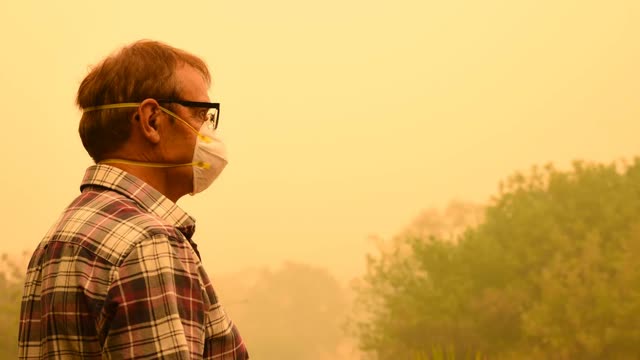

Be aware of smoke-related health symptoms, including eye, nose, and throat irritation, coughing, wheezing, shortness of breath, or headaches. If you experience these symptoms, contact your healthcare provider.
Children, older adults, pregnant or nursing women, and individuals with asthma or heart conditions are at greater risk and should take extra precautions.
When smoke levels are high, stay indoors as much as possible with doors and windows closed to minimize exposure.
Use fans indoors and, if available, set your air conditioner to recirculate. Air filters or purifiers can also help improve indoor air quality.
Avoid activities that can add to indoor pollution, such as using candles, smoking, or vacuuming while it's smoky outside.
If you must be outside for an extended period, wear a proper respirator. Note that common dust masks do not effectively filter smoke particles.
Exercise caution when driving in smoky, low-visibility conditions. Drive slowly with your headlights on, maintain a safe distance from the vehicle in front of you, and keep car windows closed with the air conditioning set to recirculate. If possible, avoid driving altogether.
Keep yourself and your family hydrated by drinking plenty of water to help mitigate the effects of smoke exposure.
Consider visiting family or friends, or public buildings with air filtration systems if the smoke becomes overwhelming. Leaving the area of thick smoke may be the best option for those with health conditions putting them at higher risk.
Check local air quality reports and pay attention to news and health warnings for your community and schools.
Understand that wildfires are a natural occurrence but have become more severe in recent years. The Forest Service is working with partners and communities to reduce wildfire threats and enhance community preparedness.